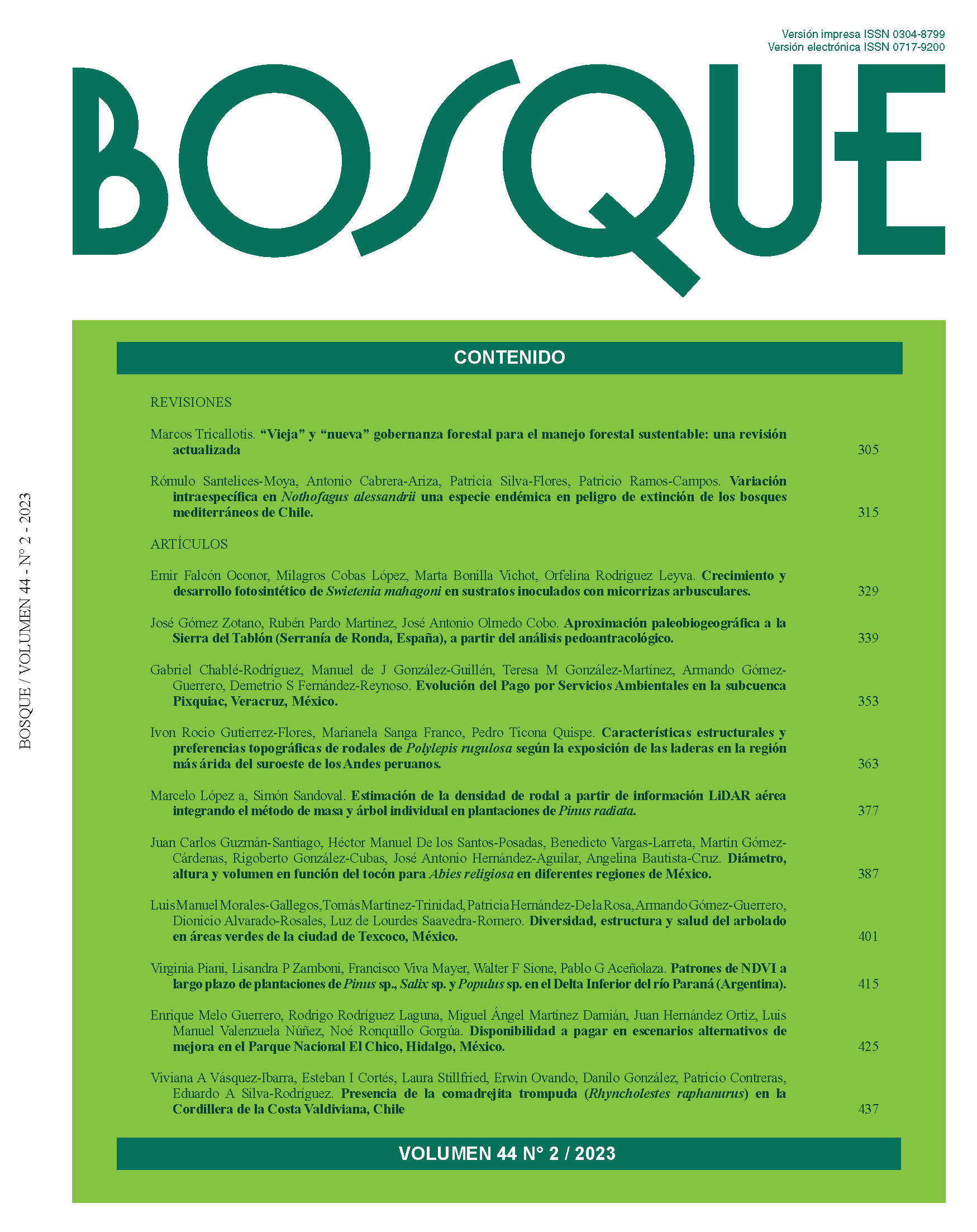Structural characteristics and topographic preferences of Polylepis rugulosa stands according to slope exposure in the most arid region of the southwestern Peruvian Andes
Main Article Content
Abstract
Polylepis forests are among the least studied and most threatened in the neotropical realm, particularly P. rugulosa due to the high pressure it has historically suffered from high-altitude human Andean populations. Among the 45 species of the genus, there are many species-specific habitat preferences, as some species prefer certain levels of solar radiation, temperature and moisture, which are affected by topographic factors. We analyzed the structural differences and the effects of topographic factors in stands of P. rugulosa on east and west facing slopes and at two topographic positions in the most arid region of Peru. The evaluation was carried out in 58 plots of 20 x 30 m in three watersheds of the Tacna region, located between 3,800 and 4,200 m a.s.l. Density and basal area were found to be higher on the west facing slopes. Height and diameter changed between the two slope exposures, but were also affected by the topographic position. Density, basal area and cover increased with vertical flow distance (VFD) and overland flow distance (OFD) in both slope exposures, and were accentuated in the high topographic position. The effect of morphometric protection index (MPI) and slope changed with topographic position in both slope exposures. These results show a higher presence of P. rugulosa in west facing slopes and low dependence of P. rugulosa forests on water availability on both slope exposures, particularly in the high topographic positions.

